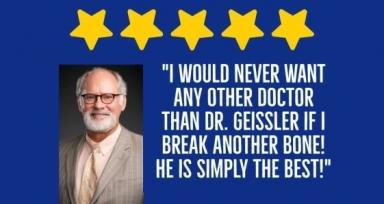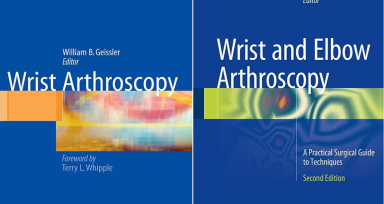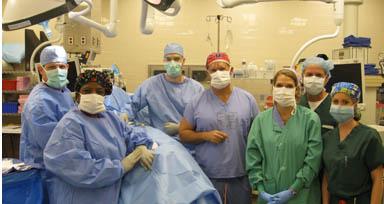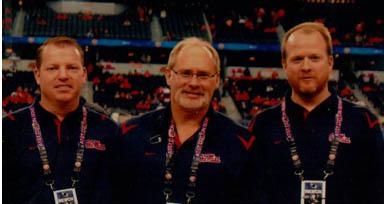Dr. Geissler recently employed a new medical device that promises to keep athletes with certain shoulder separations on the playing field. Already it is helping one Conerly Trophy-winning quarterback stay on track to continue his promising collegiate career.
Designed by Prof. Angus Wallace and Dr. Lars Neumann of Nottingham University Hospital, NHS Trust, United Kingdom, the Lockdown Acromioclavicular Device is billed as the most effective solution for acromioclavicular joint reconstructions. The Lockdown wraps around the scapula and on top of the clavicle to secure shoulder seperations, and helps individuals with acute or chronic shoulder separations heal and prevents acromioclavicular joint surgery failure.
One of Mississippi’s highest-profile current athletes, Ole Miss quarterback Bo Wallace, first injured his right throwing shoulder Sept. 22 during the Rebels’ 39-0 victory over Tulane in the Mercedes-Benz Superdome. Geissler, who covers the Ole Miss football team as chief of the sports medicine and shoulder programs at UMMC, immediately saw Wallace when he ran off the field in New Orleans and diagnosed the initial shoulder separation.
“The injury progressed over the season,” Geissler said. “He had discomfort and felt his accuracy and velocity were decreased as the injury got worse. “It was amazing that he took the hits he took and was still able to throw the ball as well as he did.”
Wallace’s shoulder injury really became serious five weeks later when he was leading the Rebels down the field in an important Southeastern Conference game against Arkansas at War Memorial Stadium in Little Rock. After throwing the ball away from the Razorback defense during what would be the game-winning drive in a tight 27-24 victory, Wallace took a hit to his shoulder.
“That’s the play that hurt it (his shoulder) to the point it needed surgery,” Wallace said. “I was in pain the rest of that game.”
Geissler knew Wallace’s shoulder had been damaged, and the Ole Miss medical and training staff helped the redshirt sophomore manage the injury for the remainder of the season while the Rebels tried to secure bowl eligibility for the first time in three years.
“He had some rehabilitation during the season and it was something we were hoping he’d be able to play with,” Geissler said. “But particularly toward the end of the season it became apparent a surgical operation would have to be done if he wanted to continue to play at that elite level.”
“The pain was always there,” Wallace said, “but once your adrenaline gets going, you put it in the back of your head. The first and second quarters would be fine, and as we started the second half, I could start to feel it a little more gradually as the game would go on. “There were a couple of games where I wasn’t sure if I would be able to finish the game, but it never really threatened to keep me out entirely.”
“When we did Bo’s surgery, his injury was more severe than what his preoperative MRIs and radiographs had demonstrated,” Geissler said. “Bo tore the ligaments that go from his shoulder blade to his clavicle. The clavicle helps hold up your upper extremity; if ligaments are torn, your arm hangs down and the clavicle becomes quite prominent.
“During a complex throwing motion, the clavicle rotates, the shoulder blade rotates, and as you’re raising your arm, your muscles are contracting. To be an elite SEC quarterback, this is a very synchronized motion that’s been practiced over many years. When you tear the ligaments, all that motion is thrown off. “It’s amazing how well he could throw the ball with the shoulder separation that he had.”
During the surgery, Geissler implanted the Lockdown, which wrapped around the scapula and on top of the clavicle, to help secure the clavicle and put the separation back together again. He then reconstructed ligaments to reattach from the scapula to the clavicle so Wallace’s body could grow within the shoulder to make its own ligaments.
“What we were trying to do was to reconstruct his ligaments with a minimal amount of holes in the bone of his clavicle so when he engages in contact this fall, hopefully it won’t cause a fracture where the holes are,” Geissler said. “To do this type of surgery in a contact athlete is a very unusual problem. I thought the use of this device, along with reconstruction of his ligaments, would be the best option for Bo.”
Geissler, who’s reconstructed shoulder separations for about 25 years using various techniques, said he has “no reservations” about using the Lockdown in athletes in the future.






